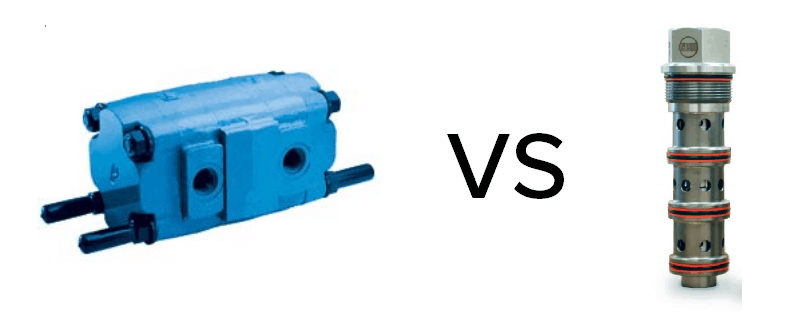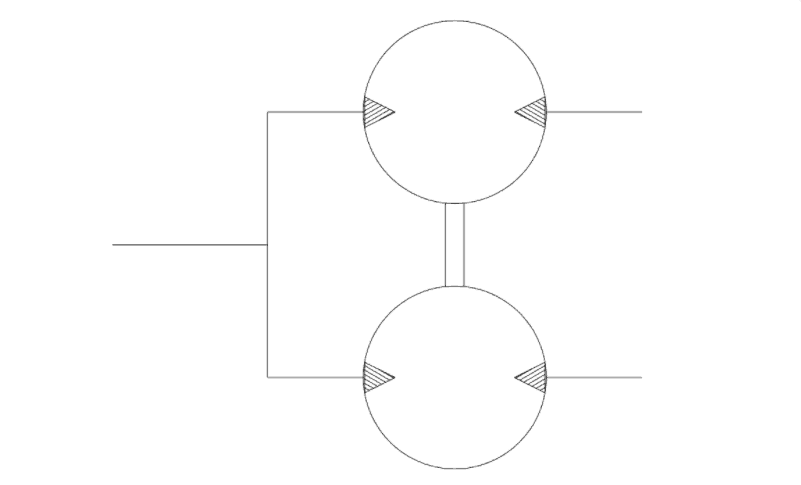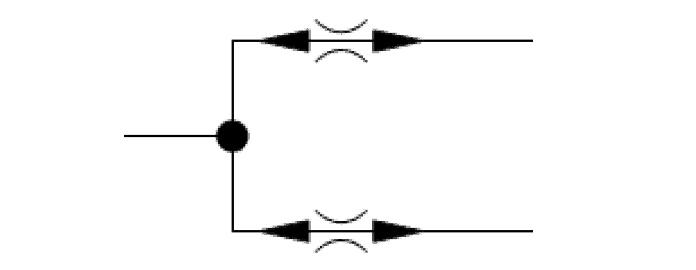Hydraulic components are getting smaller, less expensive, and more complicated as machining processes and manufacturing efficiency continue to improve. For flow dividers, what used to require a bulky pair of mechanically linked gear motors has been shrunken down to a cartridge valve.
But what’s new is not always better in every way. If you make the mistake of assuming this, you could be setting yourself up for failure. There can be serious catches in the selection process; such as thinking, “can I save money and space by using a spool type flow divider?” instead of asking, “What is best for my machine?” This article explains the differences between two flow divider styles and the considerations that need to made to avoid the pain of an incorrect application.

Why Use Hydraulic Flow Dividers?
What is the purpose of a flow divider in hydraulics? Often there are two actuators that need to be in sync with one another. When designing a linkage mechanism between the two actuators is not possible or practical to keep things in sync, another option is to control the flow of oil into each actuator. The total amount of flow available can be cut in half (or other ratios) so that the total movement is a specific, predictable amount on each side.
Gear Type Flow Dividers
The principle by which a gear type flow divider works is positive displacement. That means for every rotation, there is a specific amount of volume displaced. It is (for the most part) not affected by pressure. Couple the shafts of two gear motors together, “T” the inlets together and separate the outlets, and you have the workings of a gear type flow divider.

A schematic representation of a gear type flow divider/combiner.
Spool Type Flow Dividers
The principle by which a spool type or cartridge type flow divider works is pressure compensation. This means that a spool on each side shifts to balance the pressure required for the oil to take both paths. Since fluid follows the path of least resistance, there must be equal resistance on both sides to allow for the same amount of flow.

A schematic representation of a spool type flow divider/combiner.
How to Select Hydraulic Flow Dividers
Each approach, of course, has its advantages and disadvantages. The cost of a new spool/cartridge type flow divider is lower than a gear type. Gear type dividers are much larger and heavier but they are more tolerant of contamination. A major disadvantage of spool type dividers is their sensitivity to pressure swings. In a runaway meter-in situation, all of the flow division capability disappears and the spool type flow divider might as well be a “T.” Another potential issue with spool type dividers is heat generation. They work by creating a pressure drop, which creates heat. If they aren’t creating heat, they aren’t working. Under ideal conditions, both styles are potentially accurate to 2% or better.
Generally speaking, unless cost, dimensions, or weight are prohibitive, a gear type flow divider will always be the best performing type of flow divider. Only select a spool type divider in a situation with minimal overrunning loads or make certain that the overrunning loads are controlled by other means, such as counterbalance valves or placing the divider in a “meter out” location. Carefully consider the amount of heat that will be generated by the flow and pressure drop that will be created.
Another important note is that a spool type divider is likely to slow down the actuators in some situations compared to a gear type. If an overrunning load is an important part of a cycle time (such as in a timber grapple closing), then trying to control that load so the spool type divider will function will ultimately not be an acceptable solution.
If you are aware of the disadvantages of a spool type flow divider and ultimately determine that the advantages are more valuable, then save your company some money and real estate on your equipment by using a compact cartridge style flow divider. That could be a competitive edge for your product. Otherwise, stick with old faithful, the gear type flow divider. The next question to ask might be, “How to size a flow divider?” Contact a Cross Mobile Systems Integration expert to discuss your project and see how our team can help raise quality and improve your efficiency.
